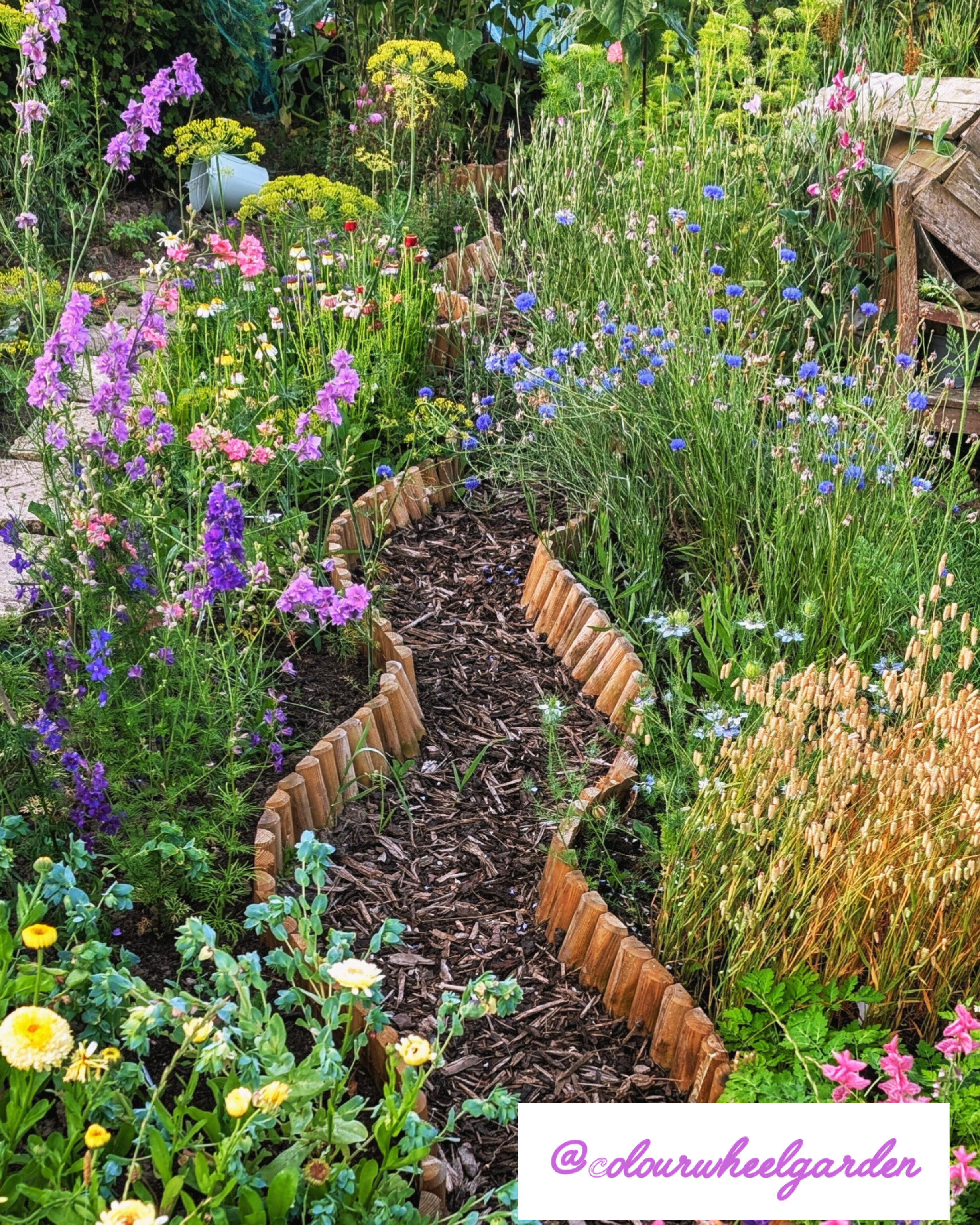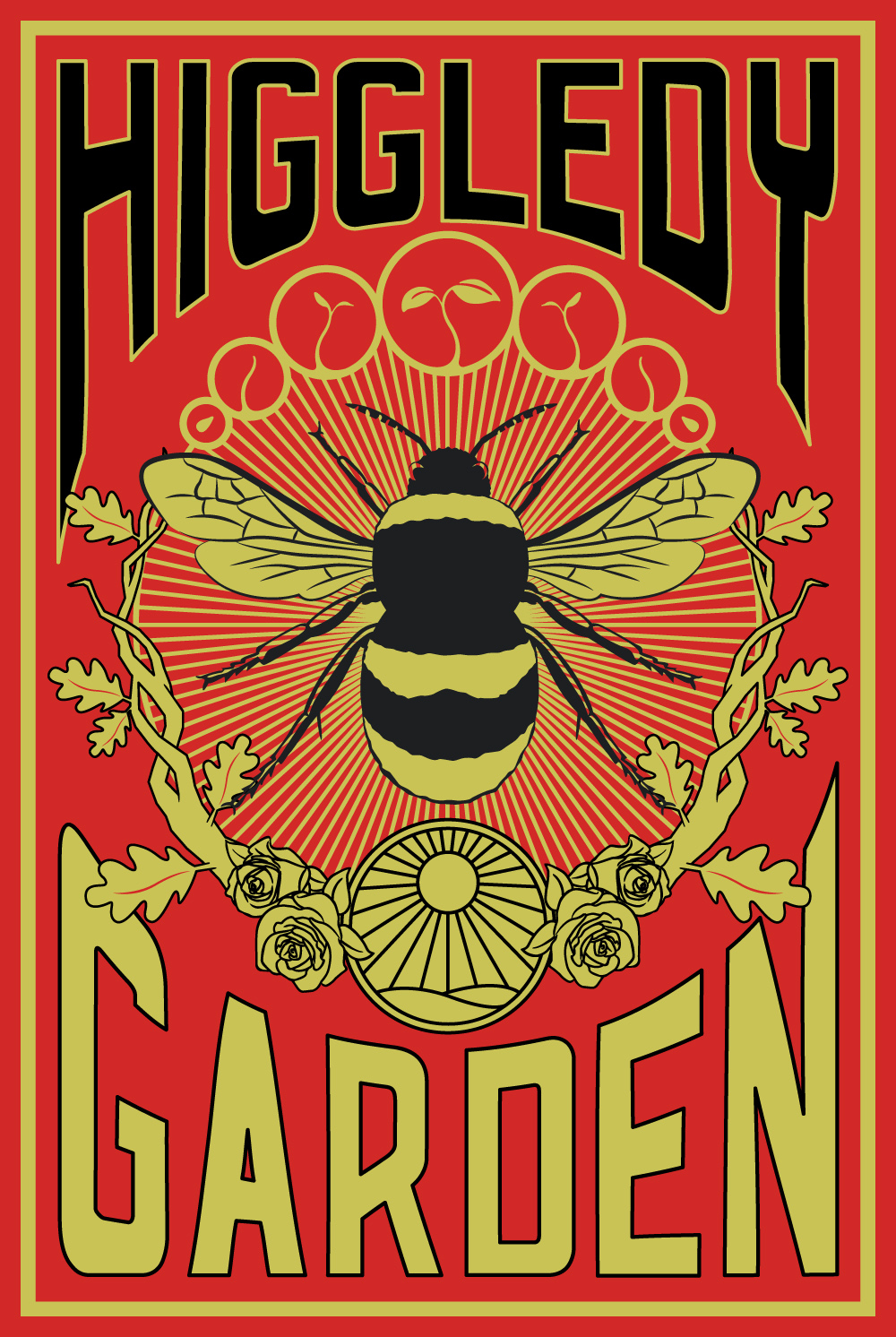Planning the 2025 cutting garden!

If we’ve learnt anything from 2024 it is certainly that no two years are the same, this year has been the year of the slug, bindweed and endless, endless rain! But us gardeners know there’s rarely two years that are the same which is bringing me endless hope for 2025! Especially all things garden related!

WORK OUT HOW MUCH SPACE YOU HAVE
November is definitely the time to think ahead to next year, get planning, and if you’re like me work out how to maximise your growing area. This is Higgledy Gemma today and I’m at a place where I’m hoping to move home but not knowing when it will happen or where it will be, and because my thin terrace garden is filled with potted and crated perennials ready to move when I do, it means I’ve got to be on the search for land if I want to grow anything at all. This year I’ve been using a quarter of an allotment to grow on and am allowed to grow on it next year so I’m going to be thinking how I can maximise my growing space and annuals that are ‘cut and come again’ are definitely my solution to maximising my currently limited growing area.
Large areas or mid – large gardens are much easier to work out, you can have a bit of everything in the cutting garden, borders of shrubs for evergreen foliage, reliable perennials for year on year consistency, some herbs, bulbs, and of course a section dedicated to annuals. But in a smaller space your space has got to work harder, much harder, but do not fear, if you like I have a limited total growing area, or just a small area dedicated to growing cut flowers I’m here to help you maximise your space, so you can have year round armfuls of flowers!

WORK OUT HOW MUCH TIME YOU HAVE
We’ve all been there got really excited about a new cut flower patch gone in guns blazing at a new allotment down every weekend for the first three weekends, only to lose steam, realise we didn’t have as much time as we thought and get overwhelmed by our new growing space. Be realistic with who you are, where you are at and how much time you honestly think you will have in the most time rushed week. If you know you can definitely dedicate at least 5 hours a week to the cutting patch then (dependent on the size of your plot) that may well be enough time to sow seeds, de weed, cut flowers and arrange. If, however you think it’s more likely that on a super busy week you’ll only have one hour a week to spare. Do not panic you just need to focus on the low maintenance, really long flowering plants that you can plant leave and they’ll take are of the rest. A few excellent ones for this are Calendulas they are quick to germinate and flower all summer along as long as you don’t allow them to go to seed. There’s a gorgeous deep electric orange variety called Calendula Indian Prince, a soft buttercream pretty pastel yellow Calendula called Calendula Ice Maiden and if you can’t decide then there’s a wonderful colourful mix of Calendulas in different shades called Calendula Art Shades. Another fantastic do-er is Borage, plant once, cut a few times and again you’ll have armfuls of blooms all summer long and the bees absolutely adore it. And another one is Briza, though be warned this is such low maintenance you only need plant it once and it will self seed for years after, low maintenance indeed!

FOR MAXIMISING PRODUCTION AIM FOR SUCCESIONAL PLANTING
In a small area or any area you that you want to maximise efficiency, every square inch has to work hard for its space and this is where successional planting comes in. Make a note of what did well at different times of the year for you and what are absolute must haves. I always like to take note of when roughly things bloom and when things end flowering so I can plan to have something in flower at every time of the year. So for example I might have a daffodil that starts flowering in March and the leaves are dying back in April, at the same time a hardy fast growing annual like Cornflowers are looking for a space to grow and could be planted on top of the daffodil area whilst the daffodil leaves are dying back. Then the cornflower would be in full flower in mid – June and I could keep cutting from it for 4 weeks before it gets tired, at which point I could cut it down completely and replace with a new fast growing annual like cosmos to take it’s place. I usually think if I’ve started to cut from an annual it’s a good time to sow a new annual to take it’s place because in typically 4 – 6 weeks’ time it will want to be replaced, excluding the long flowering plants I mentioned earlier.

CUT AND COME AGAIN ARE THE BEST PRODUCERS
Cut and come again blooms are annual flowers that keep on blooming no matter what, the more you pick the more they flower they are real doers of the garden. All they want to do is set seed, so by cutting the flower before it has chance to set seed the plant is forced to produce another bloom. But the best thing to note with cut and come again blooms is that you want to pinch out your seedlings when they have more than one set of leaves, all this means is that when your seedling is growing upwards cut it down to one pair of true leaves and instead of producing one long central stem for one single flower it will produce lateral side shoots form the wound, and have two stems shooting from the base giving you even more flowers. It can feel counterintuitive at first so if you’re like me try pinching out a few plants and not pinching out a few others to compare the difference Though I promise with the cut and come again flowers you will get even more blooms!
Some of the best cut and come again flowers have to be Sunflowers (we only sell branching sunflowers, and that means they produce branching side shoots giving you even more flowers, unlike the single stem varieties which we don’t stock, because who wants to spend forever growing one singe stem when you can have multiple stems from the same plant!) Helianthus Summer Lovin was such a joy in it’s rhubarb and custard shades and Helianthus Red Sun caught everyone’s eyes at the allotment in late Autumn this year, but a real favourite of mine is Helianthus Sonja with its super cute smaller sized heads which were exceptionally useful in posy sized arrangements, buttonholes, bud vases and table centres as they didn’t dominate the whole arrangement like some of the larger Sunflowers can! Another absolute classic cut and come again cut flower is Cosmos! This just goes and goes and goes, giving nearly 8 weeks of non stop bloom after bloom action before it begins tire, we love cosmos so much we’ve got lots of varieties to share with you! Some favourites of mine are Cosmos Sensation and Cosmos Purity these classics always seem to get the largest plants year on year without fail and pump out more cosmos blooms than any of the other cosmos varieties I’ve grown. There’s also Cosmos Double click cranberries which is new to Higgledy in 2024 and is one of my favourites because it not only has the velvety ruffled flowers it’s the only cosmos, I’ve found that dries beautifully. And lastly in the top three cut and come again cut flower recommendations it has to be Calendula, already mentioned for how long it keeps blooming (all Summer long from a March sowing, and I’ve even picked some this week in November!) but it also fantastic as a cut and come again bloom, giving you buckets and buckets of flowers which of course the perennials just cannot compete with! If you like I have a tiny growing area but want continual buckets of blooms then Sunflowers, Cosmos and Calendula will give you exactly that!
So whatever the size of your cutting patch, whatever time you have and whether you want to fill a space with flowers for the bees or pick armfuls of flowers inside for yourself I promise these tips will absolutely help! Wishing you a wonderful season of growing!
All the best,
Higgledy Gem – If you’d like to say hello and connect with me I’m known as @colourhweelgarden on Instagram, YouTube, TikTok and Threads it’s always wonderful to meet more people in our wonderful floral community! TTFN – Ta Ta for now!

